Digitalising Tyre Production
- By Juili Eklahare & Gaurav Nandi
- August 23, 2022
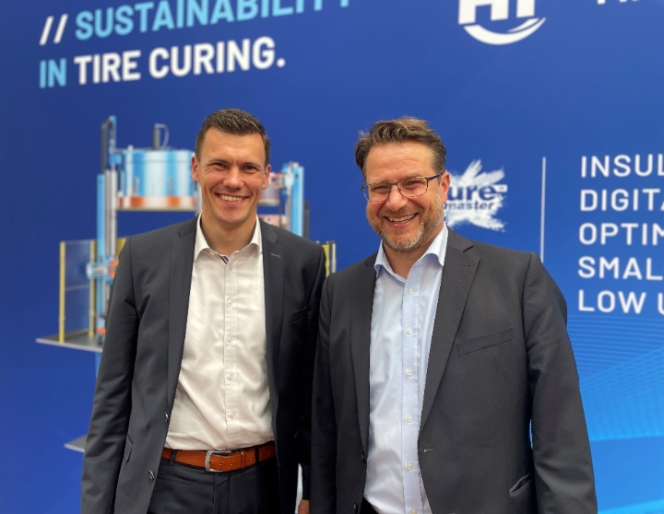
HF Group’s upcoming range of digital solutions will monitor several parameters in the curing process, like cycle times, movements of the machines etc. One of the exhibitors at the Tire Technology Expo, 2022 that was held in Hannover, Germany was HF Group. Dr Bernd Pape, Digital Solutions, HF Group, threw light on the company’s plans to develop a new product line that will enable its customers to digitally monitor tyre curing machines more effectively, the significance of sharing data and having trusted partnerships.
The global tyre industry is steering more towards digitisation to ensure precision and save production time. And in this effort, HF Group seems to be the frontrunner, banking on data warehousing to produce effective monitoring solutions for tyre curing.
“HF is known as a company constantly extending traditional machine solutions. However, we are very well aware of digitisation, and the solutions will change our previous way of doing business at a global level,” said Dr Bernd Pape, Digital Solutions, HF Group, while we interacted with him at the latest edition of the Tire Technology Expo held this year in Hannover, Germany.
“I joined HF last year in June to build up a new product segment. However, due to the pandemic, I had limited chances to visit customers or talk to potential partners for development, and this conference has been an optimum opportunity to perceive an overview of our industry,” Dr Pape mentioned while he talked about the expo.
Digital solutions
HF’s upcoming range of digital solutions will monitor several parameters in the curing process, like cycle times, movements of machines etc. It will then churn out the alarm messages of the machines and correlate them to identify discrepancies. The new-age solutions will monitor machine data at different stages and have communication modules that will share the data from the machine control software to the internet using IoT gateways.
Extra sensors will be placed on the machines to measure certain component parameters like pressure, temperature, energy consumption etc. Leveraging the combination of cycle time monitoring, alarm messages and specific measurements of the sensor technology, the data will be analysed to bring out in-depth information about the machines’ performance.
Answering whether the sensors are capable of identifying the problems, Dr Pape informed, “In order for them to work efficiently to identify problems, we need quite some data. And when we have that data, we can do two things – analyse that data and see if insights can be derived automatically, or work with experts to derive insights and then transfer the knowledge into the digital solutions. He further added, “The entire research and development process demands a lot of communication and learning together with pilot customers, too.”
It’s important to share data
Initially, HF plans to implement the solution in their own curing press and further develop solutions for other machines. “We may need cooperation from customers to better understand other machines or even the OEM of that specific machine. If you look into digital transformation, it’s all about partnership. And if you don’t share data, you will not be able to flourish. And so far, my gut has been that our industry still has room to improve. We can still learn from each other by sharing data. With every new machine, we will have a growing database and knowledge on how to improve production,” Dr Pape asserted.
Digital benefit
HF strives to keep the cycle time of a machine at a constant low level. The curing process for one tyre may take 14 minutes. With the solutions, it can be reduced by 10 to 20 seconds. This would add up for the customer to produce roughly between 500 and 1,500 tyres per press per year, informed Dr Pape. Moreover, the solutions will enhance machine availability by detecting warnings for errors or repair time.
Trusted partnerships
The new solutions will require huge amounts of data to effectively do its task, but protection of proprietary data is a major concern. Speaking in this context, Dr Pape cited, “Digital transformation is about partnership, and you need to share data. So, partnership is all about trust. You need an initial amount of trust to provide data. There is no way around that.”
“On the other hand, once you give me the data, it is on me to keep it carefully and not to share it,” he further averred and went on, “Because if I do not comply, then the alliance will be harmed. So, there is a great opportunity because we are a long-standing partner for the whole industry. Therefore, we have trusted partnerships and projects with a lot of customers.”
Explaining the timeline from implementation to resumption of services, the executive said, “Once we are up and running with this solution, we just need a couple of days to implement it. But for new machine types that have not been analysed before, a couple of weeks are needed. Once knowledge of the specific machine type, how to adjust the software and how to analyse and interpret the data is known, we can configure same machine types within days.”
Current monitoring landscape
According to the executive, currently technicians might face severe problems while monitoring the machines as the industry has witnessed a generation shift. Experienced technicians retire and new ones have to learn the entire process. With the automation of unloading and loading systems, which are getting more and more automated, there might be no operators available who can point out if the machines have any problems.
“If we get the data from the machine and analyse it, we can redirect technicians to the area that causes the problem, so that they are faster in remedying it. The data will also help us to predict problems in the near future,” Dr Pape pointed out.
Stepping into the Indian market
HF has expanded its footprint across the globe and wants to market its products worldwide. The company’s pilot customers are in the Americas, followed by Europe. It also plans to tap into the Asian market.
Speaking on its plans to enter India, Dr Pape cited, “The country has great companies and some of them might be interested in the solutions. For building up a new product segment in India, we have to know what kind of customers are interested. We will then start operations on a remote basis and develop further.”
Collaborations for the long term
HF Group has also collaborated with Possehl Analytics as its solutions partner, which will also allow it to build a network for digital solutions in the industry. On the reference side, HF refers them as their solutions partner, while Possehl Analytics refers HF as a good operations partner.
Change is the only constant
While the tyre industry itself isn’t one that changes every day, we know that digitisation will have a pivotal role in its growth, including the tyre curing process, making sure the final product is of high quality. At the same time, sharing data and making long-lasting partnerships will only make the process and final outcome more competent.
Fornnax Inaugurates 12-Acre Global Hub For Recycling Innovation
- By TT News
- November 27, 2025
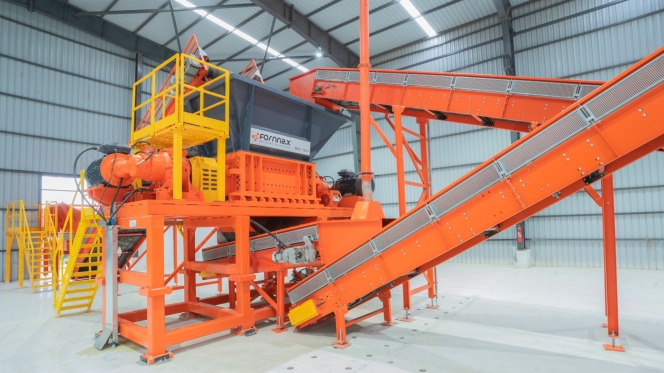
Fornnax has officially launched one of the world's largest integrated hubs for recycling innovation: a New Product Development centre and demo plant spanning over 12 acres. This facility is a critical milestone in the company's strategic vision to become a global leader in recycling solutions by 2030. It is designed to accelerate the advancement of recycling technology through a comprehensive, customer-focused approach.
The centre’s core function is its New Product Development framework, which is built upon a meticulous Gate Review Process. This system ensures precision from conception to completion. The journey begins with market research and ideation from the Sales and Marketing team, followed by a strategic review by the Leadership Team. The Design Team then creates detailed plans that are evaluated by Manufacturing, Service and Safety teams. After final approval, a functional prototype is built and subjected to a rigorous six to eight-month validation phase. The process concludes with design optimisation for mass production, officially launching the equipment for the global market. This method not just upgrades Fornnax's shredders and granulators – enhancing their capacity, energy efficiency and operational availability to 18–20 hours per day – but also validates the equipment for up to 3,000–15,000 hours under real-world conditions

A key feature of the facility is its open-door policy for clients. Customers can bring their specific materials to the demo plant to test equipment performance across various machines and conditions, providing a risk-free environment for informed investment decisions. The centre will also drive research into emerging recycling applications, such as E-waste, cables and lithium-ion batteries, where specialised engineering teams will conduct feasibility studies to design tailored solutions.
Beyond technology, the facility includes an OEM training centre dedicated to developing a skilled workforce. The programme trains operators and maintenance engineers, who gain hands-on experience before being deployed to support Fornnax's customer base. The company will also deliver comprehensive corporate training to domestic and international clients, empowering them with the expertise for optimal plant operation and maintenance. By uniting R&D, testing and training under one roof, Fornnax is establishing a powerful foundation to scale its offerings and lead the next generation of recycling technology.
Jignesh Kundariya, Director and CEO, Fornnax, said, "Innovation in product development is the key to success of becoming a global leader. With this new facility, we now have the speed, flexibility and controlled environment to design, test and validate new technologies in just six to eight months, something that would take significantly 4–5 years at a customer site. Each machine will undergo validation according to global standards, with every critical part and assembly rigorously tested under Engineering Build (EB) and Manufacturing Build (MB) protocols. Our goal is to empower customers with clarity and confidence before they invest. This facility allows them to test their own materials under real-world conditions, compare machines and see results firsthand. It’s not just about selling equipment; it’s about building trust through transparency and delivering solutions that truly work for their unique needs.”
Smithers to Expand Rolling-Resistance Testing Capabilities in China
- By TT News
- November 21, 2025
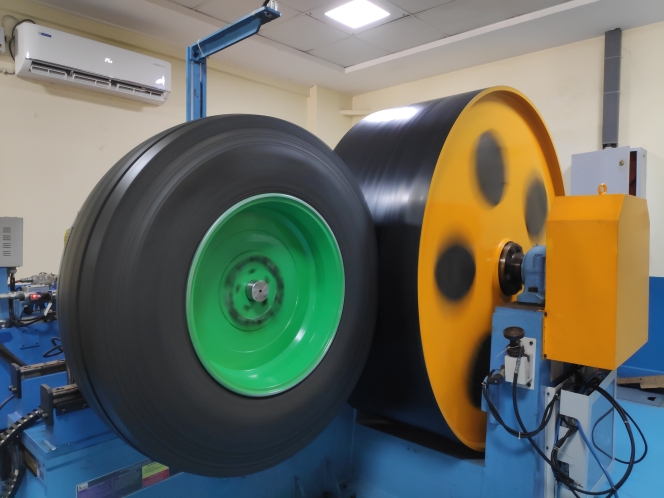
Smithers, the US-based testing and consulting group, is expanding its tyre testing operations in China with three new capabilities designed to better replicate real-world driving conditions. The investment will enhance the company’s rolling-resistance testing at its Suzhou tyre and wheel centre, strengthening its offering to global carmakers and tyre manufacturers.
The new features focus on factors that can influence vehicle energy loss, range, and overall efficiency—a growing concern as regulators tighten standards and EV makers push for longer driving range.
One new capability will allow rolling-resistance testing to be carried out with variations in slip and camber angles for passenger car and light truck tyres. Standard tests are performed at zero degrees, but even small changes in wheel alignment or body movement during real driving can affect energy consumption. The enhanced system lets customers study these effects and refine tyre designs accordingly.
Smithers is also adding high- and low-temperature rolling-resistance testing for truck and bus tyres, an extension of the temperature-controlled testing it introduced for passenger tyres in 2022. The company said demand has risen as manufacturers look to understand how cold weather affects range—a key issue for electric commercial vehicles.
A third new service will allow tyres to be tested together with chassis components such as half-shafts and brake discs. This gives OEMs independent data on how these parts contribute to overall resistance, helping them to identify where energy is being lost and to fine-tune vehicle efficiency.
All three capabilities are expected to be online by 1 December 2025.
“Smithers is seeing increased demand on a global scale for testing of tires and vehicles that more closely mimics real-world conditions,” said Derek Read, Vice President of Asia Pacific / Global Development, Materials Science and Engineering, Smithers. “These new capabilities are strategic investments into the refined, scenario-based testing our clients require to improve both tire and tire-chassis-vehicle system performance.”
Autonomous Robots Transform Continental Retreading Operations
- By TT News
- November 19, 2025
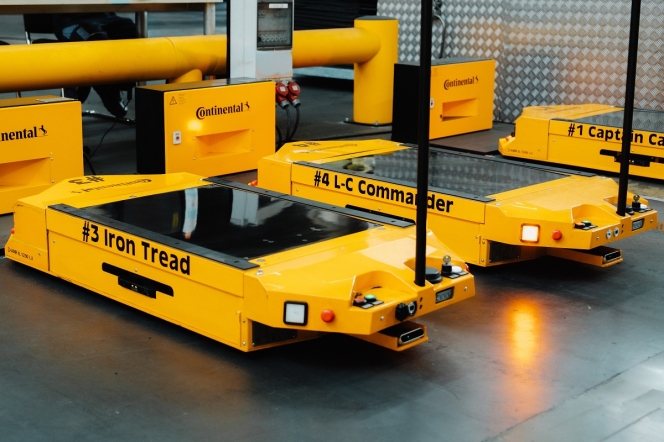
Continental's Hannover-Stöcken plant is pioneering a new era in sustainable manufacturing by seamlessly integrating advanced robotics into its core operations. Since their deployment in March 2025, a team of seven autonomous mobile robots (AMRs) has become the central nervous system for material transport, fundamentally reshaping the workflow for retreading truck and bus tyres.
This shift to automation has profoundly changed the human role on the production floor. Employees, once tasked with the physically strenuous job of manually moving heavy tyres using cranes and trolleys, are now focused on more cognitively demanding responsibilities. Their expertise is directed towards machine setup, process oversight and meticulous quality control, making their work more ergonomic and skilled.
The AMRs operate with sophisticated independence, navigating the production hall using a fusion of sensors, 360-degree cameras and AI-driven software. They efficiently ferry ‘green’ tyres between critical stages: from the building machine, where fresh rubber is applied, to the curing presses for vulcanisation and finally towards inspection. This automated coordination is digitally linked to the plant's order system, allowing for dynamic routing to optimise workflow and manage capacity.
This initiative is a cornerstone of Continental's global strategy to modernize tyre production through digitalisation and smart automation. The success in Hannover has already inspired the rollout of similar robotic solutions across the company's international network, from North America to Asia. The move aligns perfectly with the plant's sustainable mission, which is the ContiLifeCycle process itself. This process breathes new life into used tyre casings by carefully inspecting them, applying new tread rubber and vulcanising them to create a product that performs like new. The environmental benefit is substantial, as up to 70 percent of the original tyre's material is reused, significantly conserving resources.
The human element was crucial to the project's success. Continental ensured widespread employee acceptance through comprehensive training and even involved the workforce in christening the robots with creative names. This thoughtful approach has cemented the AMRs not as mere machines but as valued teammates in a shared mission to make tyre production more efficient, sustainable and future-ready.
Felix Hantelmann, head of the ContiLifeCycle plant, said, “Self-driving robots have been supporting our production workflow for six months now. They handle simple, repetitive transport tasks such as moving a tyre from one point to another. The robots are directly connected to our digital order system, so they know exactly where to go and how to coordinate with each other to get there. They are a valuable addition to our daily operations and help create a safe, efficient and ergonomically optimised production environment.”
Continental Deploys Vacuum Tech For Real-Time Tyre Wear Particle Analysis
- By TT News
- November 18, 2025
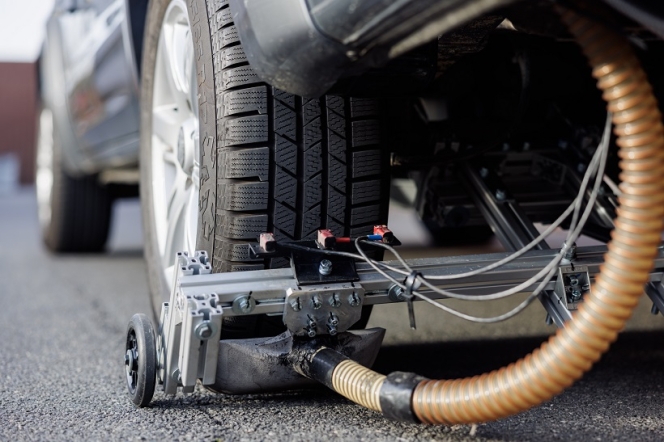
Continental's leadership in reducing tyre wear is fundamentally driven by its pioneering research into how particles are generated. A pivotal element of this strategy is the recently concluded OLRAP project, a collaboration with the Technical University of Braunschweig that broke new ground in real-world particle analysis. The research team engineered a complex experimental vehicle, outfitting it with a custom vacuum system and sensitive particle sensors. This innovative setup enabled the real-time collection and analysis of airborne particles directly at their source – the rolling tyre – under actual driving conditions. The resulting data, which for the first time correlates specific driving dynamics like aggressive acceleration and hard cornering with particle emissions, provides an unprecedented understanding of wear patterns.
This deep, data-driven insight is what directly fuels Continental's product development. By knowing precisely how and when wear occurs, engineers can make targeted optimisations to tread patterns and rubber compounds. The objective is to systematically design tyres that shed less material, thereby directly reducing their environmental footprint from abrasion. This development process rigorously maintains the critical safety and performance standards that drivers demand.
The tangible success of this research-to-development pipeline is confirmed by independent analysis, which shows Continental tyres abrade 11 percent less material than the competitor average. Furthermore, this proactive research and development strategically prepares the company for upcoming regulations like the Euro 7 standard, which will impose limits on tyre wear emissions. Beyond its own laboratories, Continental extends this commitment through cross-industry efforts, co-chairing the Tire Industry Project and contributing to public initiatives aimed at capturing tyre particles from road runoff. Through this integrated approach, Continental is leveraging fundamental scientific discovery to create more sustainable mobility solutions.


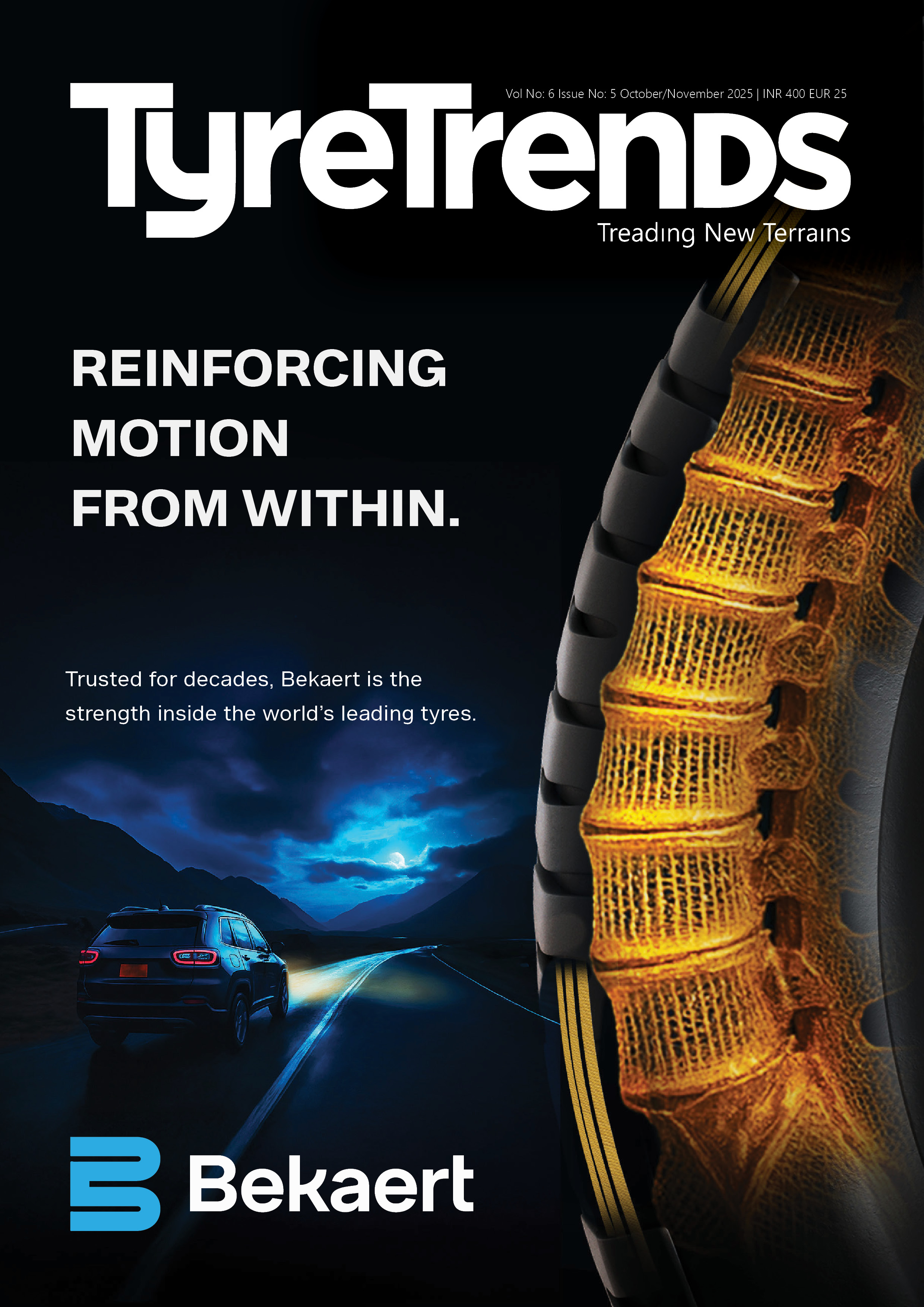




Comments (0)
ADD COMMENT